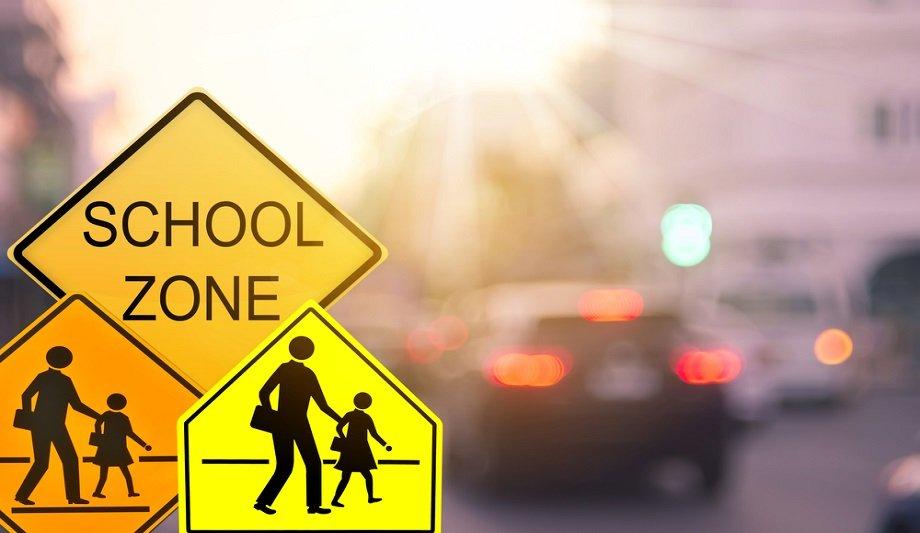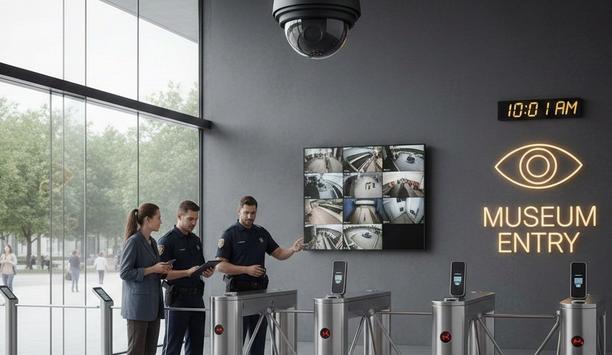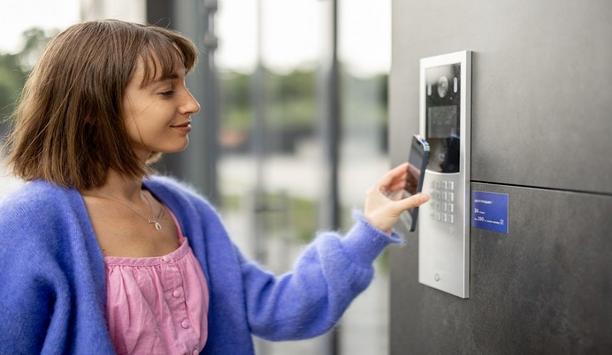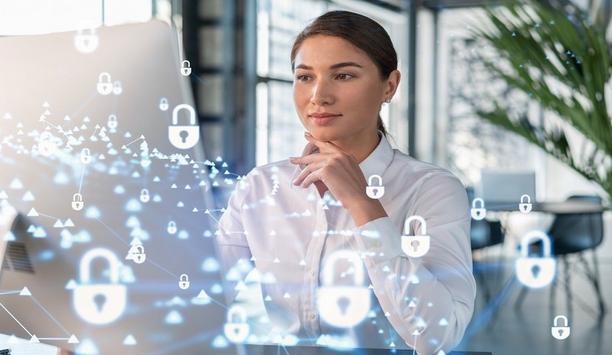Check Out Our Special Report On Casino Security
Are Schools Safer Because Of Physical Security Systems?
- School safety questioned amidst frequent violence headlines, focusing on physical security systems' impact.
- Experts debate effectiveness of physical security systems in enhancing school safety for new year.
- Attention remains on improving school security as new academic year begins with safety focus.
Editor Introduction
Headlines of violence in our schools are a reminder of the need to keep educational institutions safe. In fact, if there is a positive aspect to the constant bombardment of headlines, it is that it keeps our attention perpetually focused on how to improve school security. But what is the role of physical security systems? As the new school year begins, we asked this week’s Expert Panel Roundtable: Are schools safer because of physical security systems? Why or why not?
Today’s schools can undoubtedly be made safer thanks to advancements in physical security systems. Video, audio, and access control solutions have never been more effective than they are now, since modern security systems are able to push school security beyond just reactive processes, allowing for proactive and preventative action too. Analytic technology is a large part of this, as it can scan captured video or sound in real-time to send automatic alerts to security personnel if something unusual is detected – like an unidentified visitor, concerning objects, or loud/aggressive noises. This type of enhanced visibility into what’s being produced by surveillance technology can go a long way in preventing dangerous incidents from starting (or escalating). But technology is only one part of the equation – the strongest security systems recognize that policies, procedures, and people across many disciplines are just as important when it comes to keeping schools safe.
Schools are certainly safer because of physical security systems, but that doesn’t mean there isn’t room for improvement. Most schools don’t have the resources to monitor camera feeds in real time, so video footage is used almost exclusively as evidence of events that have already happened, or as a deterrent. The goal of modern security systems is to help schools respond better and faster in the moment – not just after the fact. We need to help change the thinking that just having cameras passively recording is enough. It isn’t. It’s also very important to create a balance between a school’s security needs and maintaining an open and inclusive learning environment. Creating a safe learning environment is critical to student success. Responsibility to do that falls to all of us – from SROs to teachers, staff, administrators, and law enforcement. It even extends to security system providers and integrators.
Ensuring the safety of schools involves considering various factors and perspectives. Over the past year, we have seen schools implement a range of security measures, including controlled access entry systems, surveillance cameras, and emergency notification platforms, all aimed at mitigating risks and responding effectively to potential threats. Additionally, safety training, emergency drills, and improved communication systems have been implemented to prepare individuals and increase overall preparedness. Cloud video surveillance solutions also play an important role in enhancing school safety by enabling real-time observation and swift response to suspicious activities or security incidents. The storage and accessibility of recorded video footage in the cloud eliminates the need for on-site physical storage devices, while also enabling authorized personell to review past events and share video evidence with law enforcement agencies. With more efficient sharing of video footage, alerts, and incident reports, stakeholders can respond faster and improve coordination during emergency situations.
For a long time, fire, surveillance, and access control systems played an important role in making schools safer. The school security ecosystem has since evolved to include high-tech solutions such as weapons detection, analytics, gunshot detection, and more. Simply put, yes, these solutions make schools safer. It would be hard to argue otherwise. That being said, post-event security still leaves much to be desired. It is unfortunate that it has to be this way, but schools are now looking for solutions that not only prevent risk but mitigate the fallout when a security event does occur. Take an active shooter for example. What security solutions can we put in place that improve first responder response times and decrease further loss of life? Since we are not at a place where such events are 100% preventable, deploying physical security systems that improve post-event security is necessary in the pursuit of safer schools.
Physical security systems have demonstrated a positive impact on enhancing school safety. By implementing measures such as video surveillance, access control, and integrated intercom platforms, schools have experienced increase security measures that effectively deter potential threats, enable real-time incident identification, and facilitate rapid responses. These systems provide an additional layer of protection by preventing unauthorized access and enhancing monitoring capabilities throughout the school premises. Moreover, the integration of security communications allows for seamless coordination between various security components, ultimately leading to more efficient and effective responses during emergencies. While physical security systems undeniably contribute to school safety, it remains crucial to complement these measures with a comprehensive approach that addresses mental health support, community engagement, and emergency planning. By embracing this holistic strategy, schools can establish a genuinely secure learning environment that safeguards the well-being of all students and staff.
There are more than 70,000 public and private K-12 schools in the United States, representing millions of students. From the crosswalk to the desk, school administrators and school boards are responsible for fostering a safe learning environment for these students. Currently schools have more security technology available to them than ever before. License plate recognition (LPR) has become an essential security tool that can serve three purposes – speed enforcement, area surveillance and analytics sharing. LPR helps security to enforce speeds and capture events through video management and can share analytics with law enforcement. Combined with community education, LRP can be used effectively to help save lives, protect communities, and be integrated in VMS for enhanced security across video and access control.
Integrating data from various security devices and systems within schools has significantly contributed to enhancing safety. By consolidating information from video surveillance cameras, access control systems, intrusion detection systems, and fire alarms, schools gain a comprehensive and unified view of their security environment. This approach improves situational awareness and enables more effective identification of potential threats or abnormal activities. Real-time analysis of the integrated data helps schools detect suspicious patterns, unauthorized access attempts, or security breaches at an early stage. This proactive approach allows for prompt intervention, reducing the potential impact of security incidents. Furthermore, the correlation of data sources supports informed decision-making by providing a comprehensive understanding of the overall security landscape. Integrating these technologies with mobile applications also facilitates rapid incident response, automating processes and providing real-time information to security personnel. This integration enables quick decision-making, streamlined communication, and effective coordination during emergencies or security breaches.
Physical security systems in schools can enhance safety by acting as deterrents, aiding in prompt response, managing visitor access, and providing incident data. Video monitoring, access control, and alarms systems can deter potential intruders and provide real-time monitoring for quick intervention. Visitor management systems regulate entry and track visitor activities. Automatic license plate reader (ALPR) systems can be used to identify suspicious vehicles. Incident documentation from security cameras can aid investigations and improve security measures. With a comprehensive view of security where both routine activities and unanticipated incidents are managed within a single unified platform, school security teams can decrease response times and improve decision-making. However, physical security systems alone cannot ensure school safety. Factors like staff training, emergency preparedness plans, mental health support, and a positive school climate are equally important. Hence physical security systems should be part of a comprehensive, holistic approach to school safety.
Certainly, physical security systems have always made school buildings safer, but the adoption of interconnected access control systems continues to improve upon those levels of security and well-being. Learning environments are naturally varied in nature and modern access control systems are providing decision makers with a more balanced system – one that focuses on everything from ease of movement and perimeter security to ventilation and fire safety. On the security element alone, it is now far easier to manage entry and exit than ever before, and where losing physical keys in an old school environment may have compromised the entire building until a replacement set of locks and keys had been sourced, modern systems can simply cancel access cards or codes at the click of a button before creating a new set. With retrofit options readily available for existing doors and gates, school security systems are better equipped to manage access and deter potential vulnerabilities while harboring a safe learning and work environment for students and staff alike.
Integrated physical security systems offer numerous benefits for schools, providing a cohesive and centralized approach to security management by consolidating access control, surveillance, and alarms into a unified system that undoubtedly makes them safer. These integrations allow communication between different security components, optimizing resource allocation, and enabling automated alerts and notifications for potential threats. Additionally, integrated access control systems offer data analysis and pattern recognition, allowing schools to identify vulnerabilities, enhance identification accuracy, and customize security profiles for various scenarios. Ultimately, modern integrated solutions can create a safer environment by streamlining security efforts and ensuring efficient and future-ready safety measures that help to protect people and property.
On a macro level, it’s difficult to confirm whether schools are safer because of security technology; however, it’s a proven fact that physical security systems are critical tools that equip security leaders on campus to review potential threats, disseminate emergency communication and enforce best practices. At the very least, physical security technology is a core component of an effective protocol for keeping students, faculty, and staff safe, according to the Partners Alliance for Safer Schools (PASS). In recent years, we have also learned that security systems perform at their best when integrators, administrators, and local public safety officers work closely together to support a school’s preparedness. Schools should implement a collaborative, visual planning and preparation process that makes digitized floor plans of a school’s physical security system available to all stakeholders, in order to fill potential gaps in school security protocol.
Physical access control and intrusion systems play a significant role in creating safer environments for school districts, but they are not a standalone solution. Highly visible deterrents – like fencing, cameras, signage, and school resource officers – are effective at preventing intrusion, vandalism, and theft, but holistic security depends on various factors. For example, these days, communities depend on school districts to not just physically make their buildings safer, but to create peace of mind and foster emotional safety, too. Creating and sharing emergency responses – like active shooter and shelter-in-place procedures, real-time communications, and rapid dynamic evacuation capabilities – helps everyone feel more confident that effective plans are in place to protect students and staff when it counts. And with new technologies on the market – like decibel sensors and mobile access solutions – the tools with which school districts can layer in protections are growing every year.
In response to evolving risks, schools need to prioritize safety within their campus environments and aim for prevention rather than simply reacting to incidents. Physical security solutions, like access control and video surveillance, play a vital role in achieving this goal. Access control empowers on-site security personnel to control entry points, slowing down potential threats and providing precious time for responders to act. If necessary, permissions can be revoked swiftly, securing students and staff within designated areas. Additionally, these systems can integrate with other technologies, such as video surveillance and intrusion detection, bolstering overall security measures for schools. While physical security systems can indeed enhance safety, they are just one part of a broader saefty plan that includes well-trained personnel, emergency protocols, and community involvement to foster a secure learning environment.
Physical security systems, including cameras, sensors, and alarms, are making schools safer by providing surveillance, deterring potential wrongdoers, and facilitating a quicker response to emergencies. However, their effectiveness depends on proper integration and management. Without an efficient video management solution, the overwhelming data generated may hinder real-time monitoring and response. It is essential to combine these technological tools with human expertise to interpret situations accurately and make informed decisions, ensuring a balanced approach that prioritizes safety while respecting privacy concerns and maintaining a positive learning environment.
Physical security systems, such as surveillance cameras, access control systems, and alarm systems, can definitely contribute to making schools safer, but they are not a comprehensive solution on their own. The effectiveness of these systems in enhancing school safety depends on various factors, and their impact should be considered within a broader context. Which means, school safety requires a framework composed of technology, training, education and community engagement to meet the needs of the whole campus. With an ecosystem of holistic safety and wellness in place, schools are in a better position to promote the long-term development and success of our youth. Such as,
1) School Preventive Measures
2) Physical & Cyber Security
3) Threat Detection, Assessment & Intervention
4) Preparedness & Response
5) Incident Management & Recovery... etc.
In conclusion, physical security systems can contribute to school safety, but they are just one component of a comprehensive approach. Schools need to consider a holistic strategy that encompasses physical security alongside other measures to create a safe and conducive learning environment for all stakeholders.
There is no doubt that schools are safer as a result of physical security systems. Though no individual technology will, by itself, reduce harmful behavior to zero, it's important to look at what technology makes possible when it comes to responding to potential threats. Some prominent examples of ways schools choose to increase safety is through the expansion of camera footprints to ensure there are no blind spots, making video accessible in short order to first responders, securing facilities by reducing access to points of entry, and the ability to recognize and alert based on weapons detection. There are huge benefits to the application of even a single one of these strategies, but school environments are becoming much more thorough in devising and deploying a comprehensive multi-pronged approach that overlaps these technologies and increases school safety.
Editor Summary
It takes a comprehensive approach to keep students and staff safe at school, including such elements as maintaining a positive school climate and implementing student mental and behavioral well-being programs. In addition to strategies to prevent and mitigate violence, there is an important role to play for physical security systems, from access control to video surveillance to broader systems that are combined and interconnected into a more cohesive whole. Physical security technology is a core component of an effective protocol for school security.
- Related links
- Anviz Access control software
- Anviz Video Surveillance software
- Axis Communications Digital video recorders (DVRs)
- Axis Communications Video Surveillance software
- Axis Communications Access control software
- Gallagher Access control software
- Genetec Access control software
- Genetec Video Surveillance software
- Morse Watchmans Access control software
- Salient Systems Video Surveillance software
- TDSi Video Surveillance software
- TDSi Access control software
- Anviz Access control readers
- Axis Communications Access control readers
- Gallagher Access control readers
- Morse Watchmans Access control readers
- TDSi Access control readers
- Anviz Network Video Recorders (NVRs)
- Axis Communications Network Video Recorders (NVRs)
- Gallagher Access control cards/ tags/ fobs
- Genetec Network Video Recorders (NVRs)
- Salient Systems Network Video Recorders (NVRs)
- TDSi Access control cards/ tags/ fobs
- TDSi Network Video Recorders (NVRs)
- Networkable Access control readers
- Biometric Access control software
- Magnetic Stripe Access control cards/ tags/ fobs
- ANPR Software Video Surveillance software
- Card Access control cards/ tags/ fobs
- Access Control Software Access control software
- Real Time Network Video Recorders (NVRs)
- Biometric Access control readers
- Card Access control software
- Mifare Access control cards/ tags/ fobs
- Control Software Video Surveillance software
- Detection Software Video Surveillance software
- Standalone Access control readers
- Card Swipe Access control readers
- Tag Access control cards/ tags/ fobs
- Standalone / Networkable Access control readers
- Smart Card Access control cards/ tags/ fobs
- IP Surveillance Software Video Surveillance software
- Real Time / Timelapse / Event Network Video Recorders (NVRs)
- Management Software Video Surveillance software
- Magnetic Stripe Access control readers
- Smart Card Access control software
- Monitoring Software Video Surveillance software
- Surveillance Software Video Surveillance software
- RFID Access control readers
- Door Monitoring Option Access control software
- Smart Card Access control readers
- Wiegand Access control readers
- Face Recognition Software Access control software
- ID Badging Software License Access control software
- License Access control software
- User tool for control panel Access control software
- Version Upgrade Access control software
- Visitor Management tool Access control software
Expert commentary
Security beat
The Key To Unlocking K12 School Safety Grants
DownloadHoneywell GARD USB Threat Report 2024
DownloadPhysical Access Control
DownloadThe 2024 State Of Physical Access Trend Report
DownloadThe Security Challenges Of Data Centers
DownloadKentixONE – IoT Access And Monitoring For Data Centers
Climax Technology HSGW-Gen3 Modular Smart Security Gateway
Delta Scientific DSC50 ‘S’ Barrier: Portable, Crash-Rated Vehicle Mitigation Solution




































